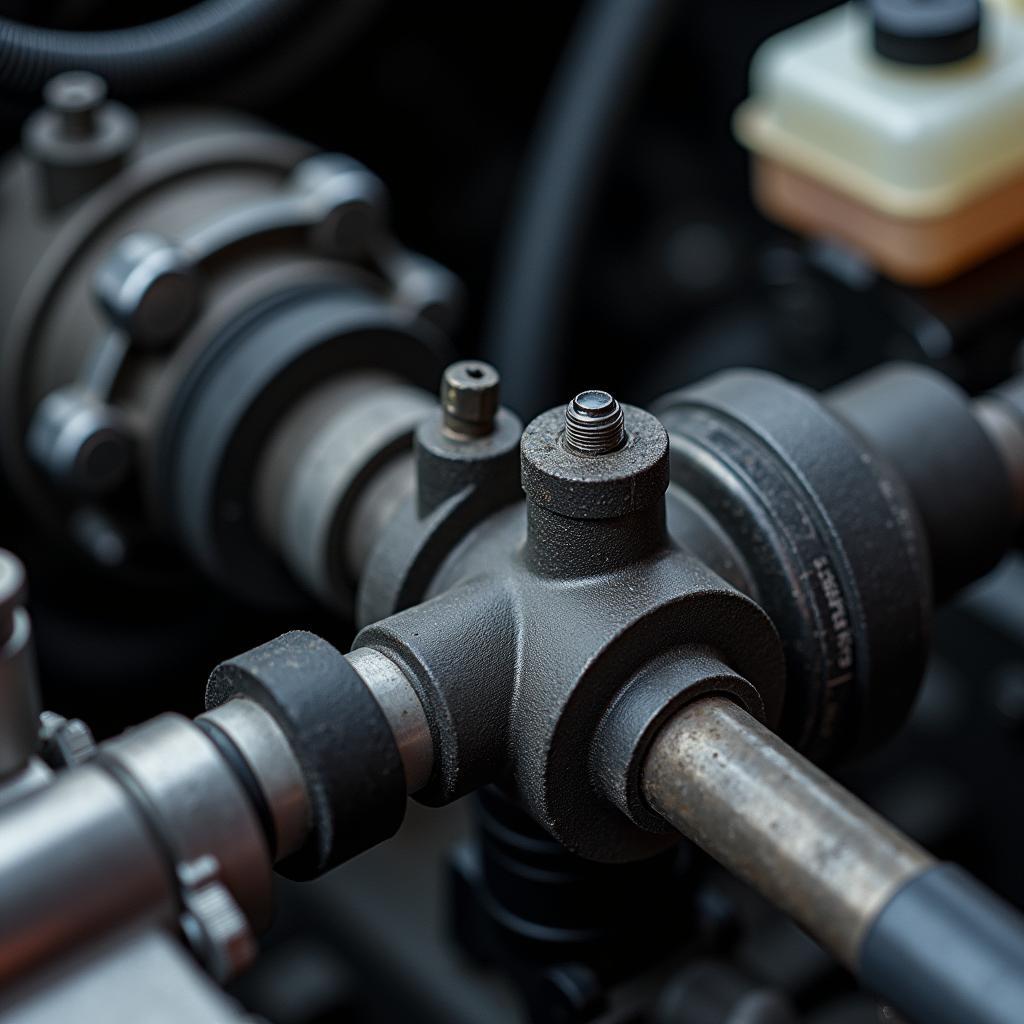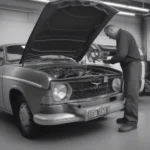In the automotive world, we constantly encounter abbreviations and technical terms that aren’t always self-explanatory. One such example is “Ps Hydraulik.” But what exactly lies behind this combination? In short: “PS Hydraulik” refers to the use of hydraulic systems to transmit or amplify mechanical power, often measured in PS (Pferdestärke, or horsepower).
Imagine you have to lift a heavy object. With just muscle power, that might be impossible. A hydraulic lift, however, uses power transmission through fluids to easily accomplish this task. The same principle applies to many areas of the car where hydraulic systems are used.
Where Automotive Hydraulics Are Used in Cars
Automotive hydraulics play a crucial role in many systems in modern vehicles. Here are some examples:
Steering
Hydraulic power steering systems use the force of hydraulic fluid under pressure to make steering easier. The system consists of a pump, a control valve, and a hydraulic cylinder connected to the steering mechanism.
Braking System
The braking system of many vehicles also operates using hydraulics. When the brake pedal is pressed, pressure is applied to the brake fluid, which in turn activates the brake pistons at the wheels.
Clutch
In vehicles with automatic transmissions, a torque converter, which also operates on a hydraulic basis, facilitates the power transmission between the engine and the transmission.
 Hydraulic power steering system component
Hydraulic power steering system component
Advantages of Automotive Hydraulic Systems
The use of automotive hydraulics offers numerous advantages in vehicle manufacturing:
- Power Amplification: Hydraulic systems can generate and transmit enormous forces, which is particularly important for demanding tasks like steering or braking.
- Compact Design: Hydraulic components are often smaller and lighter than comparable mechanical systems, leading to more efficient use of space in the vehicle.
- Precise Control: Hydraulic systems enable precise and stepless control, which contributes, for example, to a comfortable steering feel.
Potential Problems with Automotive Hydraulic Systems
Despite their advantages, hydraulic systems are not free from potential problems:
- Leaks: Leaks in the system can lead to a loss of hydraulic fluid, impairing the functionality of the affected components.
- Air in the System: If air enters the hydraulic system, it can cause a spongy feeling when braking or steering.
- Wear and Tear: Like all mechanical components, hydraulic parts are subject to a certain amount of wear and tear, which can lead to performance loss or malfunctions.
Maintenance and Repair of Automotive Hydraulic Systems
To ensure the longevity and reliability of hydraulic systems in your car, regular maintenance is essential. This includes:
- Checking Fluid Level: The level of the hydraulic fluid should be checked regularly and topped up if necessary.
- Hydraulic Fluid Change: Depending on the manufacturer’s recommendations, the hydraulic fluid should be changed at regular intervals.
- Inspecting for Leaks: The hydraulic system should be regularly inspected for leaks.
Conclusion
Automotive hydraulics play a central role in the functioning of modern vehicles. Whether it’s the steering, braking system, or transmission – hydraulic systems enable powerful, precise, and comfortable solutions for complex tasks in vehicle manufacturing. To maintain the performance and longevity of these systems, regular maintenance and inspection are essential.
Further Questions About Automotive Hydraulic Systems?
- What are typical signs of a faulty hydraulic pump?
- How can I remove air from a hydraulic system?
- Where can I find qualified repair shops for repairing automotive hydraulic systems?
On CarAutoRepair.site you can find more helpful information and answers about car repair. Also visit our other articles:
Please feel free to contact us if you need help repairing your car. Our experts are ready to assist you.

